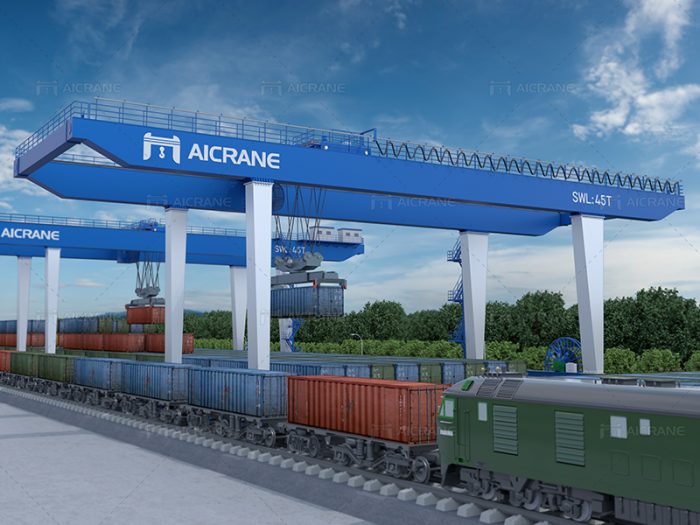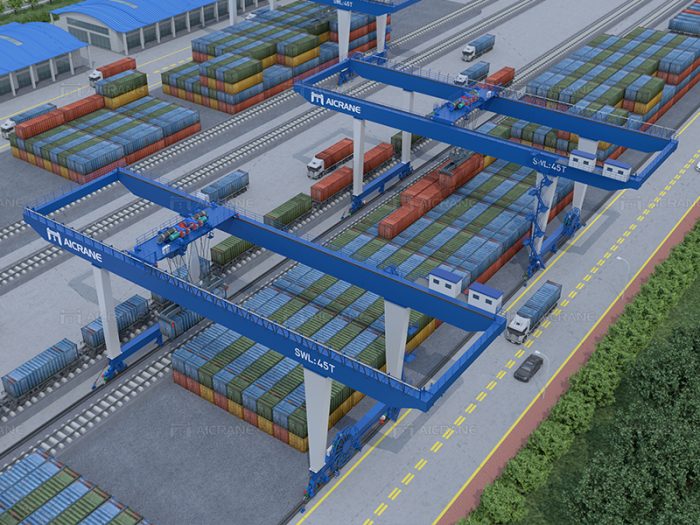Rail-mounted gantry cranes (RMG cranes) play a crucial role in various industries, from shipping and logistics to manufacturing and construction. Selecting the right RMG crane for your specific needs is essential for optimizing efficiency and ensuring a safe working environment. In this guide, we will explore key factors to consider when purchasing an RMG crane, helping you make an informed decision.

Understanding Your Requirements:
Before diving into the market, it’s vital to assess your specific requirements. Consider factors such as the type and weight of the materials you’ll be handling, the required lifting capacity, the span and height of the rail mounted gantry crane for sale, and the frequency of operation. Understanding your needs will guide you in choosing a crane that aligns with your workflow and enhances productivity.
Lifting Capacity:
The lifting capacity of an RMG crane is a critical factor. It should be capable of handling the maximum weight of the materials you plan to lift. Keep in mind that the crane’s capacity includes the weight of the load, the lifting equipment, and any additional attachments. Ensure that the crane’s capacity exceeds your maximum load requirement to accommodate potential future needs.
Span and Height:
The span and height of the RMG crane depend on the layout of your facility and the nature of your operations. Measure the distance between the rails to determine the appropriate span. Additionally, consider the vertical clearance required for lifting materials to the desired height. Choosing the right span and height will optimize the crane’s performance and ensure it fits seamlessly into your workspace.

Rail System and Configuration:
The rail system is a crucial component of an RMG crane. Evaluate the type of rail system that suits your facility – whether it’s a single or double girder configuration. Single girder cranes are suitable for lighter loads and shorter spans, while double girder cranes provide increased stability and lifting capacity. Assess the rail gauge, wheel configuration, and rail type to ensure compatibility with your facility’s infrastructure.
Control System and Automation:
Consider the control system of the RMG crane, as it significantly influences operational efficiency. Modern container handling gantry cranes often come with advanced automation features, such as programmable logic controllers (PLCs) and remote control options. Automation can enhance precision, reduce downtime, and improve overall safety. Evaluate the control system to ensure it aligns with your operational requirements and technological preferences.
Safety Features:
Safety is paramount in any industrial setting. Look for RMG cranes equipped with comprehensive safety features, including overload protection, emergency braking systems, and collision avoidance technology. Additionally, check if the crane complies with industry safety standards and regulations. Prioritize the well-being of your personnel and the integrity of your materials by investing in a crane with robust safety features.
Maintenance and Support:
A well-maintained crane ensures longevity and consistent performance. Consider the ease of maintenance and availability of spare parts when choosing an RMG crane. Opt for a supplier that offers reliable customer support, preventive maintenance services, and quick access to replacement parts. Regular maintenance is essential for minimizing downtime and maximizing the lifespan of your investment.
Conclusion:
Choosing the right rail-mounted gantry crane requires careful consideration of various factors, including lifting capacity, span, height, rail system, control features, safety, and maintenance. By understanding your specific requirements and thoroughly evaluating these aspects, you can make an informed decision that aligns with your operational needs. Invest in a high-quality RMG crane to enhance efficiency, safety, and overall productivity in your industrial operations. To learn more about crane information, visit https://steelmillcranes.com/
